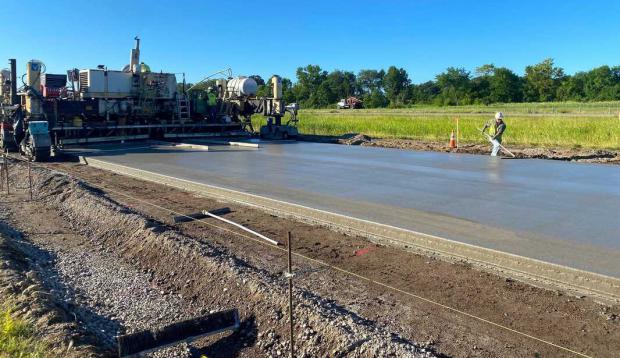
Breaking News
 Battleborn Batteries Responds! Their Overheating Device is a "Feature" not a "Problem
Battleborn Batteries Responds! Their Overheating Device is a "Feature" not a "Problem
 Actor Liam Neeson Outs Himself as MAHA After Narrating Pro-RFK Jr. Documentary Slamming...
Actor Liam Neeson Outs Himself as MAHA After Narrating Pro-RFK Jr. Documentary Slamming...
 Kyle Rittenhouse announced on social media Wednesday that he has tied the knot.
Kyle Rittenhouse announced on social media Wednesday that he has tied the knot.
 JUST IN: President Trump Grants Tina Peters Pardon
JUST IN: President Trump Grants Tina Peters Pardon
Top Tech News
 Build a Greenhouse HEATER that Lasts 10-15 DAYS!
Build a Greenhouse HEATER that Lasts 10-15 DAYS!
 Look at the genius idea he came up with using this tank that nobody wanted
Look at the genius idea he came up with using this tank that nobody wanted
 Latest Comet 3I Atlas Anomolies Like the Impossible 600,000 Mile Long Sunward Tail
Latest Comet 3I Atlas Anomolies Like the Impossible 600,000 Mile Long Sunward Tail
 Tesla Just Opened Its Biggest Supercharger Station Ever--And It's Powered By Solar And Batteries
Tesla Just Opened Its Biggest Supercharger Station Ever--And It's Powered By Solar And Batteries
 Your body already knows how to regrow limbs. We just haven't figured out how to turn it on yet.
Your body already knows how to regrow limbs. We just haven't figured out how to turn it on yet.
 We've wiretapped the gut-brain hotline to decode signals driving disease
We've wiretapped the gut-brain hotline to decode signals driving disease
 3D-printable concrete alternative hardens in three days, not four weeks
3D-printable concrete alternative hardens in three days, not four weeks
 Could satellite-beaming planes and airships make SpaceX's Starlink obsolete?
Could satellite-beaming planes and airships make SpaceX's Starlink obsolete?
New Low-Carbon Concrete Outperforms Today's Highway Material While Cutting Costs in Minnesota

Concrete and its most important ingredient, cement, is one of the most carbon-intensive industries on Earth because it's used so often in construction. It has virtually no parallels for the ease of use, versatility, and structural properties, but emits about 0.6 tons of carbon per 1 ton of cement mixture produced according to Imperial College London.
US firm Carbon Upcycling Technologies, in collaboration with the Minnesota Department of Transportation (MnDOT) has successfully completed a three-year study on the use of the company's low-carbon cement in highways.
The results highlight Carbon Upcycling's ability to be a drop-in solution for reducing carbon-intensive cement in concrete, while saving money and making stronger roads.
The work in the study was carried out by Sutter Engineering and sponsored by the National Road Research Alliance (NRRA). It rigorously tested 16 unique concrete mixtures in real-world conditions on an active Minnesota highway to identify options that could reduce the carbon footprint of infrastructure without sacrificing strength or durability.
Completed in early 2024, the study aimed to find materials that could significantly lower the carbon footprint of concrete paving without compromising durability. Carbon Upcycling's CO2-enhanced mix achieved a 12.5% reduction in cement content while matching the workability of traditional concrete, allowing seamless handling, placement, and setting times for construction crews.
"Infrastructure is the very foundation of a sustainable future, and at Carbon Upcycling we're committed to creating materials that support this vision while establishing a secure, stable North American supply chain," said Apoorv Sinha, CEO of Carbon Upcycling.
"Our collaboration with the Minnesota Department of Transportation highlights how Carbon Upcycling can transform captured emissions into local materials that strengthen our infrastructure. By focusing on resilience and sustainability, we're contributing to a vision where our essential structures are clean and built to last."

 First totally synthetic human brain model has been realized
First totally synthetic human brain model has been realized Mach-23 potato gun to shoot satellites into space
Mach-23 potato gun to shoot satellites into space

